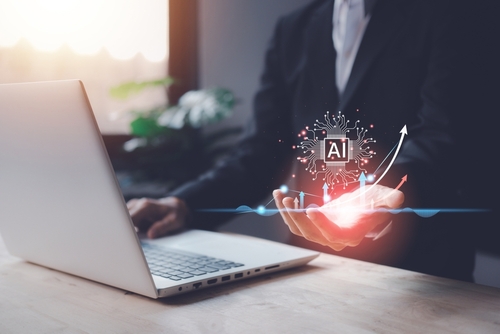AI is a tool like anything else. So, when I hear about AI in hiring, I think less about the AI itself and what it is capable of and more about how companies, teams and individuals may use it. Talent Acquisition (TA) and retention is a people-centered process: It wouldn’t be wise to overuse AI or replace TA with AI.
Much of the positive press around AI in hiring is behind this hope that AI resume screening or AI-assisted interview processes could help reduce individual recruiter or hiring manager bias. On the surface, this sounds plausible: screening tools will check for matches to the job description on a person’s resume. More connections between a candidate’s listed skills and the text of the role summary will result in a candidate being more highly ranked as a potential fit, removing any assumptions a person may make about names, origins, educational background and more. However, this leaves no room for human difference and nuance.
Keep Your Hiring Practices People-Centric
Any Talent Acquisition partner can tell you that resumes vary wildly, but can an AI resume screening tool adjudicate between similar certifications or only the certifications shown in the job description? Can it distinguish between differences in phrasing? Does it always look at the same part of the resume for a skills summary or can it pull from skill keywords mentioned anywhere in the document?
It’s important to note that most screening tools do not automatically reject a candidate based on what they do or do not see but can instead estimate a candidate’s fitness. In most cases, automatic rejections come from not meeting minimum requirements in self-filled pre-screen questions, not from an AI determined threshold. Instead, AI will put candidates it ranks higher in front of the recruiter faster than manual screening.
Be Mindful of AI Bias
We must also consider that AI tools are built within our social and cultural system and we teach them the same way. Many categories of discrimination, such as race and gender presentation, are rooted systemically, which means that we are not often dealing with discrimination based on a hiring partner’s active distaste or dislike of a group of people, but rather that societal expectations inherently preference certain educational backgrounds, work experience and socio-economic statuses. A tool like AI cannot see its own bias when it pulls from data that is inherently biased.
I think here about BlackGPT which is built upon Meta’s Large Language Models by incorporating African American cultural data and history. With this extra information in mind, the answers given to prompts change significantly. While ChatGPT is not an AI screening tool, this illustrates my point: An AI is only as smart, nuanced, culturally aware and effective as we make it.
Barriers Beyond the Code
AI also cannot overcome barriers that exist outside of its scope. For example, it was reported in 2023 that women only made up 28% of the STEM workforce. The gender gap is concerning, especially as the STEM fields continue to advance so quickly.
What are the causing factors for this low percentage? Stereotypes, math anxiety, lack of women in STEM leadership positions, unconscious bias and work-life balance imbalance, to name a few.
AI will not result in diverse pipelines in career paths already heavily dominated by a certain group simply by attempting to avoid human bias. And in some cases, it can accidentally circumvent situations of positive bias where a recruiter may see something in an uncommon background or career path and want to speak to the candidate anyway.
Don’t Forget About Your Candidates
We must consider the impression the use of AI tools leaves on candidates. They are skeptical of AI tools, often trying a variety of resume changes to bypass possible AI resume screening. The belief that AI screening tools are the result of not getting calls persists. A simple online search of “AI resume tricks” yields plenty of results and speculation that job seekers are being unfairly screened out.
Talent Acquisition and retention is a fundamentally human process. Organizations want engaged employees who like their jobs and colleagues. Nothing will make a candidate feel like they are about to be a cog in a machine like going through several steps of an application process without ever speaking to a human. Organizations must learn to balance AI tools that increase effectiveness with a personal touch and transparency that will encourage engagement and interest.
How should AI be used?
I have found success using AI to help adjust job postings. Entering a draft into tools like ChatGPT with the prompt of “can you make this job description more streamlined and remove biased language” can act as a shortcut, instead of line-by-line editing. These same chat-bots can be effective for supplemental training. For example, technical recruiters who want to understand the fundamentals of their positions can ask for a primer on the basics of C++.On the candidate side, a language model tool can be helpful to practice interview techniques.
AI is a tool that will only be as effective as we make it. Organizations can find success in using tools like ChatGPT for job descriptions, additional information and even for basic resume screening. However, a healthy amount of skepticism should be reserved for claims that AI can remove bias in the hiring process. Recent studies show mixed results in AI’s ability to reduce bias in hiring or increase diversity in candidate pipelines, and misunderstandings amongst the general populace about what AI tools do and what data they pull from shows mistrust between employers and potential candidates if these tools are not used with care. With a constantly shifting market and rapid acceleration of technology that outpaces the relevant research, People Teams and their orgs should approach integrating AI into their hiring process with care and diligence.
Kat Skjoldager is Talent Acquisition Specialist at Progress.

